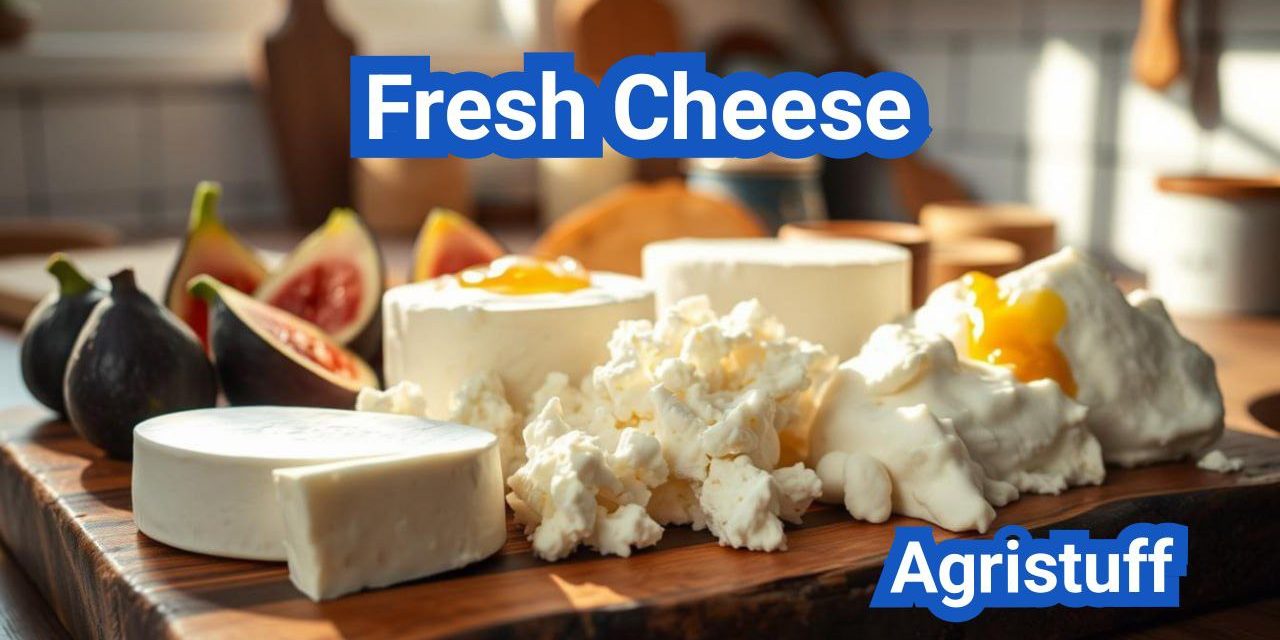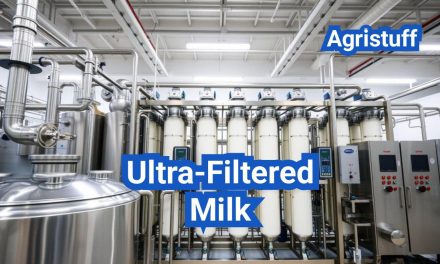Discover the versatility of quick-curd cheese styles. Fresh cheese encompasses a variety of cheeses, including mozzarella, cottage cheese, and ricotta, known for their mild flavors and versatility in recipes.
These cheeses are characterized by their soft textures and are often used in cooking and baking. From pasta fillings to salads and desserts, quick-curd styles add a delicious touch to various dishes. Understanding the different types and how to use them can elevate your culinary creations.
Key Takeaways
- Explore various types of quick-curd cheese styles.
- Learn how to incorporate these cheeses into your recipes.
- Understand the characteristics and uses of mozzarella, cottage cheese, and ricotta.
- Discover tips for storing fresh cheese to maintain its quality.
- Find inspiration for using fresh cheese in your cooking and baking.
What Defines Fresh Cheese in the Culinary World
Fresh cheese, with its simplicity and versatility, is a staple in many cuisines worldwide. Unlike aged cheeses, fresh cheese is not subjected to a lengthy aging process, which preserves its mild flavor and soft texture.
The Science Behind Quick-Curd Formation
The production of fresh cheese involves the coagulation of milk, typically through the addition of acid or rennet. This process results in the formation of curds, which are then separated from the whey. The science behind quick-curd formation lies in the acidification or enzymatic coagulation of casein proteins in milk, leading to a soft, fresh cheese.
Key factors influencing curd formation include:
- Milk type and quality
- Coagulation method (acid or rennet)
- Temperature and pH levels during coagulation
Fresh vs. Aged Cheese: Understanding the Fundamental Differences
Fresh cheese and aged cheese differ significantly in terms of production process, texture, and flavor. While aged cheese undergoes a prolonged aging process that concentrates its flavors and alters its texture, fresh cheese is consumed shortly after production.
| Characteristics | Fresh Cheese | Aged Cheese |
|---|---|---|
| Production Process | Short, involves minimal aging | Long, involves significant aging |
| Texture | Soft, creamy | Varied, can be hard, crumbly, or semi-soft |
| Flavor | Mild, slightly tangy | Rich, complex, often sharp |
Understanding these differences is crucial for chefs and home cooks looking to incorporate cheese into their recipes effectively.
The Rich History of Fresh Cheese Across Cultures
Across the globe, fresh cheese has played a significant role in shaping culinary identities, reflecting the unique heritage of each region. The history of fresh cheese is a testament to the ingenuity and diversity of cultures that have developed their own cheese-making traditions.
European Fresh Cheese Traditions
In Europe, fresh cheese has been a staple for centuries, with countries like Greece and Italy boasting their own iconic varieties. Feta, for instance, is a Greek cheese that has become synonymous with Mediterranean cuisine. Its production involves a traditional process that has been passed down through generations, highlighting the importance of preserving cultural heritage.
Italian cuisine also boasts a rich tradition of fresh cheese, with Ricotta being a prime example. Used in both sweet and savory dishes, Ricotta’s versatility showcases the adaptability of fresh cheese in various culinary contexts.
Asian and Middle Eastern Fresh Cheese Heritage
In Asia and the Middle East, fresh cheese has been an integral part of local cuisine, with countries like India and Iran having their own unique cheese-making traditions. Paneer, an Indian cheese, is widely used in various dishes, from Palak Paneer to Paneer Tikka Masala. Its mild flavor and firm texture make it a favorite among locals and international chefs alike.
In the Middle East, cheeses like Akawieh from Lebanon are cherished for their creamy texture and mild flavor, often used in desserts or as a topping for various dishes.
Latin American Fresh Cheese Varieties
Latin America is home to a diverse array of fresh cheeses, with Queso Fresco being a staple in many countries. This Mexican cheese is known for its crumbly texture and mild flavor, often used in dishes like tacos and salads. Its simplicity and versatility have made Queso Fresco a beloved ingredient across the region.
Other countries in Latin America, such as Brazil and Colombia, also have their own fresh cheese varieties, each with its unique characteristics and uses in local cuisine.
Popular Types of Fresh Cheese Around the World

Exploring the various types of fresh cheese reveals a rich tapestry of culinary traditions from around the globe. Fresh cheese is an integral part of many cuisines, offering a range of flavors and textures that enhance various dishes.
Italian Fresh Cheeses
Italy is renowned for its fresh cheeses, with mozzarella and ricotta being among the most popular. Mozzarella, known for its creamy texture, is a staple in Italian cuisine, particularly on pizzas and in caprese salads. Ricotta, on the other hand, is often used in pasta fillings, lasagnas, and as a topping for pizzas.
Hispanic Varieties: Queso Fresco and Queso Blanco
In Hispanic cuisine, queso fresco and queso blanco are two fresh cheeses that stand out. Queso fresco, with its crumbly texture, is often used in salads, tacos, and as a topping for various dishes. Queso blanco, known for its white color and mild flavor, is commonly used in cooking and baking.
Indian Subcontinent: Paneer and Its Relatives
The Indian subcontinent boasts its own unique fresh cheese, paneer, which is a staple in Indian cuisine. Paneer is a firm, non-aged cheese made by curdling milk with lemon juice or vinegar. It’s often used in dishes like palak paneer and paneer tikka masala.
Middle Eastern and Mediterranean Fresh Cheeses
In the Middle East and Mediterranean regions, fresh cheeses like Akke and labneh are popular. Akke is a type of fresh cheese that originates from Lebanon, known for its creamy texture and mild flavor. Labneh, a strained yogurt cheese, is widely consumed in the region, often served as a dip or used in various recipes.
Understanding Fresh Cheese Curds: The Building Blocks
Fresh cheese curds serve as the building blocks for a wide range of cheeses, influencing their taste and texture. The characteristics of these curds are crucial in defining the final product’s quality and characteristics.
What Makes a Perfect Fresh Cheese Curd
A perfect fresh cheese curd is characterized by its tender yet firm texture and a mild, slightly tangy flavor. The curd should have a smooth, even consistency and a clean, fresh aroma. Achieving this perfection requires careful control over the cheese-making process, including factors like temperature, pH, and the coagulation method.
Regional Variations in Curd Production
Different regions have their unique methods and traditions when it comes to curd production. For instance, the production of paneer in India involves boiling milk and then curdling it with an acid, resulting in a firm, white cheese. In contrast, European fresh cheeses like ricotta or cottage cheese may involve different coagulation techniques and aging processes.
The “Squeak Test” and Other Quality Indicators
The “squeak test” is a well-known quality indicator for fresh cheese curds. When bitten into, fresh curds should “squeak” due to their high moisture content and the presence of casein proteins. Other quality indicators include the curd’s texture, flavor, and appearance. A high-quality curd should be free of off-flavors and have a consistent texture.
| Quality Indicator | Description | Ideal Characteristic |
|---|---|---|
| Squeak Test | The sound made when biting into the curd | A clear, audible squeak |
| Texture | The feel of the curd in the mouth | Tender yet firm |
| Flavor | The taste of the curd | Mild, slightly tangy |
Essential Equipment for Making Fresh Cheese at Home

Fresh cheese making at home is a fun and rewarding experience, but it does require some specific equipment to get started. Having the right tools not only simplifies the process but also ensures the quality and safety of your homemade cheese.
Basic Tools Every Home Cheesemaker Needs
To begin making fresh cheese, you’ll need some basic equipment. These tools are essential for handling and processing the cheese curds.
- Large Pot: A large, heavy-bottomed pot is necessary for heating the milk to the appropriate temperature.
- Thermometer: Accurate temperature control is crucial in cheese making, making a thermometer indispensable.
- Cheese Mold or Colander: Depending on the type of cheese you’re making, you’ll need a mold or colander to shape and drain the curds.
- Cheesecloth or Butter Muslin: These are used for lining the mold or colander and for wrapping the cheese to drain excess whey.
Optional Equipment for Advanced Techniques
As you become more comfortable with basic cheese making, you may want to explore more advanced techniques. Additional equipment can help you achieve different textures and flavors.
| Equipment | Purpose |
|---|---|
| Cheese Aging Refrigerator | For controlling the aging environment of your cheese |
| Pasta Filata Machine | For stretching and shaping mozzarella and other pasta filata cheeses |
Sanitization and Food Safety Considerations
Maintaining a clean and sanitary environment is critical when making cheese at home. Proper sanitization helps prevent contamination and ensures the cheese is safe to eat.
Key sanitization practices include:
- Using hot water or a sanitizing solution to clean equipment
- Ensuring all utensils and surfaces are sanitized before use
- Keeping the cheese making area clean and free from potential contaminants
By following these guidelines and using the right equipment, you can enjoy making fresh cheese at home while maintaining high standards of quality and safety.
Step-by-Step Guide to Making Basic Fresh Cheese at Home
With just a few simple steps, you can create delicious fresh cheese in the comfort of your own kitchen. Making fresh cheese at home allows you to control the ingredients, texture, and flavor, ensuring a product that’s both healthy and delicious.
Selecting the Right Milk
The first step in making fresh cheese is selecting the right milk. You can use cow’s milk, goat’s milk, or sheep’s milk, depending on the type of cheese you want to make and your personal preference. For a richer flavor, consider using whole milk. If you’re looking for a lower-fat option, you can use low-fat or non-fat milk.
Milk Quality Matters: Ensure that the milk you use is fresh and of high quality. The quality of the milk directly affects the taste and texture of your final product.
Adding Acid or Cultures
To coagulate the milk, you’ll need to add either an acid (like vinegar or lemon juice) or a bacterial culture. The type of acid or culture you use depends on the type of cheese you’re making. For example, ricotta cheese is typically made by adding an acid, while cottage cheese often involves using a mesophilic culture.
- For acid-coagulated cheeses, heat the milk to the appropriate temperature, then slowly add the acid while stirring gently.
- For culture-coagulated cheeses, heat the milk, cool it to the required temperature, add the culture, and let it incubate until coagulation occurs.
Cutting and Draining the Curds
Once the milk has coagulated, you’ll need to cut the curds to release more whey and create a smooth, even texture. The size of the curds depends on the type of cheese: smaller curds result in a creamier cheese, while larger curds produce a chunkier texture.
After cutting, allow the curds to sit for a few minutes before draining them through a cheesecloth or a colander lined with cheesecloth. The whey can be reserved for other recipes or discarded.
Shaping and Finishing Your Cheese
The final step is shaping and finishing your cheese. Gather the edges of the cheesecloth and give the cheese a gentle squeeze to remove any excess whey. For cheeses like ricotta, you can stop here and use the cheese immediately. For others, like cottage cheese, you may need to rinse the curds with cold water to stop the cooking process and improve the texture.
Tips for Perfect Fresh Cheese: Be gentle when handling the curds to avoid breaking them and creating an uneven texture. Also, consider the aging process if you’re planning to age your cheese, though this is less common with fresh cheeses.
By following these steps, you can create a variety of fresh cheeses at home, from ricotta and cottage cheese to other delicious types. Experiment with different milks, acids, and cultures to find your favorite flavors and textures.
Mastering Mozzarella: The Art of Pasta Filata Cheeses

Mastering the art of mozzarella involves understanding the intricacies of pasta filata cheeses. Mozzarella, a staple in Italian cuisine, has gained worldwide popularity for its creamy texture and versatility in various dishes. The process of crafting mozzarella is a nuanced one, requiring precision and patience.
Traditional vs. Quick Mozzarella Methods
There are two primary methods for making mozzarella: traditional and quick. The traditional method involves a longer process of curdling and stretching, resulting in a more authentic texture and flavor. The quick method, on the other hand, uses a faster curdling process and is more suitable for home cheesemakers with limited time.
The traditional method requires heating the curd in hot water and then stretching it until it becomes smooth and elastic. This process can be time-consuming but yields a superior product.
Stretching Techniques for Perfect Texture
Achieving the perfect texture in mozzarella is largely dependent on the stretching technique. The curd must be heated to the right temperature and then stretched until it becomes smooth and pliable. Proper stretching is crucial for developing the characteristic mozzarella texture.
- Heat the curd in hot water until it reaches the desired temperature.
- Stretch the curd until it becomes smooth and elastic.
- Fold the mozzarella to create a uniform texture.
Fresh Mozzarella vs. Burrata: Understanding the Differences
While both fresh mozzarella and burrata are Italian cheeses, they have distinct differences. Fresh mozzarella is a type of pasta filata cheese known for its soft, elastic texture and mild flavor. Burrata, on the other hand, is a more complex cheese that consists of a mozzarella shell filled with cream and shredded stracciatella.
The key difference lies in their composition and texture. Fresh mozzarella is a single, uniform cheese, whereas burrata is a composite cheese with a creamy filling.
Creating Perfect Ricotta and Cottage Cheese

With just a few ingredients and some basic equipment, you can create delicious ricotta and cottage cheese in the comfort of your own kitchen.
Whole Milk Ricotta Technique
Making whole milk ricotta at home is a straightforward process that requires attention to temperature and acidity. To start, you’ll need whole milk, an acid such as vinegar or lemon juice, and salt. The key to achieving fluffy ricotta lies in gently heating the milk to the correct temperature before adding the acid.
The mixture should be stirred gently and allowed to sit for a few minutes until it curdles. The curds are then separated from the whey using a cheesecloth or a fine-mesh sieve. Rinsing the curds under cold water can help remove excess acidity and improve the texture.
Homemade Cottage Cheese Process
Cottage cheese is another versatile fresh cheese that can be made at home with relative ease. The process involves pasteurizing milk, adding a mesophilic cheese culture, and allowing it to incubate until it reaches the desired pH. The curds are then cut, cooked, and drained to achieve the characteristic cottage cheese texture.
For a creamier cottage cheese, you can add a small amount of heavy cream to the curds after they’ve been drained. This step is optional but can enhance the flavor and texture.
| Cheese Type | Milk Type | Culture/Type | Incubation Time |
|---|---|---|---|
| Ricotta | Whole Milk | Acid (Vinegar/Lemon) | N/A |
| Cottage Cheese | Skim/Whole Milk | Mesophilic Culture | 5-6 hours |
Troubleshooting Common Issues
When making ricotta or cottage cheese, several issues can arise, including curds that are too firm or too soft, or an unpleasant flavor. Troubleshooting these issues often involves adjusting the temperature, acidity, or incubation time.
- For ricotta that’s too wet, try draining it for a longer period or using a cheesecloth with a finer mesh.
- If your cottage cheese lacks flavor, consider adding a pinch of salt or a culture that produces more diacetyl (a compound that gives a buttery flavor).
By understanding the basics of making ricotta and cottage cheese, you can experiment with different flavors and textures to create your perfect versions of these versatile cheeses.
Exploring Fresh Goat Cheese (Chèvre) and Its Versatility

Chèvre, or fresh goat cheese, has been a staple in many cuisines for centuries, prized for its creamy texture and tangy flavor. This versatile cheese can be used in a variety of dishes, from appetizers to desserts, and its production at home is both rewarding and straightforward.
Basic Chèvre Production at Home
Making fresh goat cheese at home is a simple process that requires just a few ingredients: goat’s milk, cheese cultures, and rennet. The process involves heating the milk, adding the cultures and rennet, and then allowing the mixture to curdle before draining and shaping the cheese.
- Start by heating the goat’s milk to the appropriate temperature.
- Add cheese cultures and rennet, stirring gently to combine.
- Allow the mixture to curdle, then cut the curds and let them drain.
- Shape the drained curds into their desired form.
Flavoring and Shaping Options
One of the joys of making chèvre at home is the ability to customize its flavor and texture. You can add herbs, spices, or other ingredients to create unique variations.
Some popular flavoring options include:
- Garlic and herbs like parsley or chives
- Spices such as paprika or cayenne pepper
- Fruits like cranberries or figs
Shaping your chèvre can also add to its appeal. You can form it into logs, balls, or even coat it in a layer of ash or herbs for a more rustic look.
Creative Uses for Fresh Goat Cheese
Fresh goat cheese is incredibly versatile and can be used in a wide range of dishes. It’s a great addition to salads, pasta dishes, and as a topping for crackers or bread.
Some creative ways to use fresh goat cheese include:
- Stuffing it into chicken breasts or bell peppers
- Using it as a dip for vegetables or crackers
- Mixing it with herbs and spreading it on crackers or bread
- Incorporating it into desserts like cheesecakes or tarts
With its rich flavor and versatile texture, fresh goat cheese is a valuable addition to any kitchen. Whether you’re making it at home or purchasing it from a store, there are countless ways to enjoy this delicious cheese.
Comparing Different Fresh Cheese Varieties

Comparing fresh cheese varieties reveals a range of differences in production methods, taste, and usage in recipes. This comparison is essential for understanding the unique qualities of each type and how they can be best utilized in cooking and baking.
Paneer vs. Queso Blanco: Similarities and Differences
Paneer and queso blanco are two popular fresh cheeses with distinct origins and characteristics. While both are made from curdled milk, the process and resulting texture differ. Paneer, an Indian cheese, is known for its firm texture and mild flavor, making it ideal for dishes like palak paneer. Queso blanco, commonly found in Latin American cuisine, has a softer texture and a slightly tangy taste, often used in dishes like quesadillas.
- Paneer: Firm texture, mild flavor, often used in Indian cuisine.
- Queso Blanco: Softer texture, slightly tangy, commonly used in Latin American dishes.
Cottage Cheese vs. Farmer’s Cheese
Cottage cheese and farmer’s cheese are both fresh cheeses but differ in texture and production methods. Cottage cheese is known for its lumpy texture and mild flavor, often consumed as a health food due to its high protein content. Farmer’s cheese, on the other hand, has a creamy texture and is often used in baking and cooking.
- Cottage Cheese: Lumpy texture, high protein content, mild flavor.
- Farmer’s Cheese: Creamy texture, versatile in recipes, slightly tangy flavor.
Cream Cheese: Standards and Variations
Cream cheese is a soft, creamy fresh cheese with a mild, slightly tangy flavor. It is a versatile ingredient used in both sweet and savory dishes. Variations like boursin, which is flavored with herbs and spices, offer additional culinary possibilities.
- Standard Cream Cheese: Mild flavor, creamy texture, used in cheesecakes and frostings.
- Boursin: Flavored with herbs and spices, used as a spread or in sauces.
In conclusion, comparing different fresh cheese varieties highlights their unique characteristics and uses. Understanding these differences can help in selecting the right cheese for specific recipes and culinary applications.
The Best Fresh Cheeses for Different Culinary Applications

Fresh cheese is a versatile ingredient that can elevate a wide range of dishes, from simple salads to complex desserts. Its mild flavors and creamy textures make it an ideal component in many culinary contexts.
Ideal Fresh Cheeses for Salads and Cold Dishes
When it comes to salads and cold dishes, certain types of fresh cheese stand out for their flavor and texture. Cottage cheese and ricotta are excellent choices for adding protein and creaminess to green salads or pasta salads. For a more exotic twist, paneer can be cubed and tossed with vegetables and herbs, creating a delightful and refreshing salad.
- Cottage cheese: High in protein, great for a healthy snack or addition to salads.
- Ricotta: Adds a creamy texture to pasta salads or can be used as a dip.
- Paneer: Ideal for Indian-inspired salads, offering a firm texture.
Cooking with Fresh Cheese: Heat Stability Considerations
Cooking with fresh cheese requires an understanding of its heat stability. Cheeses like mozzarella and queso fresco have good melting properties, making them perfect for pizzas, lasagnas, and other baked dishes. However, cheeses like cottage cheese and ricotta can become grainy or separate when heated, so they’re best used in dishes where they’ll be gently warmed or used as a topping.
- Mozzarella: Excellent for pizzas and caprese salads due to its melting properties.
- Queso fresco: Adds a tangy flavor to dishes and melts well.
- Cottage cheese and ricotta: Best used in baked goods or as a topping to avoid texture issues.
Dessert Applications for Fresh Cheese
Fresh cheese is not just for savory dishes; it’s also a key ingredient in many desserts. Ricotta cheesecake is a classic dessert that combines the creaminess of ricotta with the sweetness of sugar and chocolate. Cream cheese is another versatile fresh cheese used in cheesecakes, frostings, and dips for fruit.
- Ricotta: Used in cheesecakes and cannoli fillings.
- Cream cheese: Essential for cheesecakes, frostings, and fruit dips.
- Mascarpone: Adds richness to tiramisu and other Italian desserts.
By understanding the characteristics of different fresh cheeses, cooks and bakers can choose the perfect type for their culinary creations, whether it’s a simple salad, a hearty cooked meal, or an elegant dessert.
Fresh Cheese Recipes From Around the World

From appetizers to desserts, fresh cheese plays a starring role in a multitude of dishes from around the world. The versatility of fresh cheese makes it a favorite among chefs and home cooks alike, as it can be used in various culinary applications, from savory meals to sweet treats.
Appetizers and Starters
Fresh cheese is a great addition to appetizers and starters, adding a rich and creamy texture. Some popular options include:
- Bruschetta topped with fresh ricotta and basil
- Spinach and artichoke dip made with cream cheese
- Grilled cheese sandwiches featuring fresh goat cheese
For a simple yet elegant appetizer, consider a fresh cheese platter. You can combine different types of fresh cheese, such as cottage cheese, ricotta, and goat cheese, with crackers, fruits, and nuts for a delightful snack.
Main Dishes Featuring Fresh Cheese
Fresh cheese is a key ingredient in many main dishes, providing a creamy contrast to other flavors. Some classic examples include:
| Dish | Type of Fresh Cheese | Description |
|---|---|---|
| Lasagna | Ricotta | Layered pasta dish with ricotta, meat sauce, and mozzarella |
| Stuffed Shells | Ricotta | Jumbo pasta shells filled with ricotta mixture and baked |
| Paneer Tikka Masala | Paneer | Indian dish featuring marinated paneer in a creamy tomato sauce |
Sweet Treats and Desserts
Fresh cheese is also a popular ingredient in desserts, offering a lighter alternative to traditional sweet cheeses. Some beloved desserts include:
- Cheesecake made with cream cheese
- Cannoli filled with sweetened ricotta
- Blintzes with cottage cheese and fruit
For a decadent dessert, try making a cheesecake with a graham cracker crust and a creamy filling featuring cream cheese. Top it with fresh fruit or a caramel sauce for an extra-special treat.
Pasteurization and Food Safety with Fresh Cheese

Ensuring the safety of fresh cheese is paramount, and pasteurization plays a crucial role in this process. Fresh cheese, by its nature, is highly perishable and susceptible to contamination. Therefore, understanding and implementing proper pasteurization techniques is essential for both commercial producers and home cheesemakers.
Understanding Pasteurization Requirements
Pasteurization involves heating milk to a specific temperature for a certain duration to eliminate harmful bacteria. For fresh cheese production, pasteurization is critical. The US Dairy Code requires that all milk used for cheese production be pasteurized or held at a certain temperature for a specified period if it’s to be labeled as “pasteurized.”
“Pasteurization is not just a recommendation; it’s a necessity for ensuring consumer safety,” as noted by food safety experts. The process not only kills pathogens but also extends the shelf life of the cheese by reducing bacterial load.
Raw Milk Fresh Cheese: Risks and Regulations
Raw milk cheese, while prized for its rich flavor and texture, poses significant health risks due to the potential presence of pathogens like Listeria, E. coli, and Salmonella. Regulations around raw milk cheese vary by country and, in the United States, by state. The FDA mandates that raw milk cheese must be aged for at least 60 days to be considered safe for consumption.
Safety Practices for Home Cheesemakers
For home cheesemakers, adhering to strict safety practices is vital. This includes using pasteurized milk, maintaining a clean environment, and ensuring proper temperature control during the cheese-making process. Regular sanitization of equipment and storage facilities is also crucial.
- Always use pasteurized milk unless you’re certain about the safety of the raw milk source.
- Maintain a clean and sanitized workspace.
- Monitor temperatures during cheese production and storage.
By following these guidelines, home cheesemakers can significantly reduce the risk of contamination and produce high-quality, safe fresh cheese.
Proper Storage Techniques for Maximum Freshness
The right storage techniques can significantly extend the shelf life of fresh cheese. Proper handling and storage are crucial for maintaining its taste, texture, and overall quality.
Refrigeration Best Practices
Refrigeration is the most common method for storing fresh cheese. To maintain its freshness, it’s essential to store it at the right temperature. The ideal refrigerator temperature for storing fresh cheese is between 39°F and 41°F (4°C and 5°C).
- Store fresh cheese in a covered container to prevent contamination and exposure to air.
- Keep it away from strong-smelling foods, as cheese can absorb odors easily.
- Use the cheese within a few days of opening for the best flavor and texture.
Packaging Materials and Methods
The packaging material used for storing fresh cheese can significantly impact its freshness. Breathable materials like cheese paper or wax paper are ideal as they allow the cheese to breathe while preventing moisture from accumulating.
For soft cheeses, consider using airtight containers to prevent drying out. When storing crumbled or shredded cheese, wrap it tightly in plastic wrap or aluminum foil to prevent air exposure.
Freezing Fresh Cheese: Possibilities and Limitations
Freezing is a viable option for some types of fresh cheese, but it’s not suitable for all. Soft cheeses like ricotta or cottage cheese can be frozen, but their texture may change upon thawing.
- For best results, freeze cheese in airtight containers or freezer bags.
- Label the containers with the date and contents.
- When you’re ready to use the frozen cheese, thaw it in the refrigerator or at room temperature.
By following these storage techniques, you can enjoy your fresh cheese for a longer period while maintaining its quality and flavor.
Nutritional Profiles of Common Fresh Cheeses
Fresh cheeses are not only delicious but also packed with nutrients, offering numerous health benefits when consumed as part of a balanced diet. The nutritional profiles of these cheeses can vary significantly, making some more suitable than others for specific dietary needs.
Protein, Fat, and Calcium Content Comparison
Different types of fresh cheese have unique nutritional profiles. For instance, cottage cheese is high in protein and relatively low in fat, making it an excellent choice for those looking to increase their protein intake. On the other hand, ricotta cheese tends to be higher in fat but is still a good source of protein and calcium.
“The nutritional content of fresh cheese can be quite diverse,” notes a recent study on dairy nutrition. “Understanding these differences is key to making informed dietary choices.”
- Cottage cheese: High in protein, low in fat
- Ricotta cheese: Higher in fat, good source of protein and calcium
- Mozzarella: Moderate protein, varying fat content depending on milk type
Cottage Cheese Nutrition Facts
Cottage cheese stands out for its high protein content and versatility in diets. A typical serving (1 cup) contains approximately 28 grams of protein, 2.5 grams of fat, and 80-100 calories. It’s also a good source of calcium, essential for bone health.
| Nutrient | Amount per 1 cup serving |
|---|---|
| Protein | 28 grams |
| Fat | 2.5 grams |
| Calories | 80-100 |
Health Benefits and Dietary Considerations
Incorporating fresh cheese into one’s diet can have several health benefits, including improved bone density due to high calcium content and enhanced muscle recovery from protein. However, it’s essential to consider the fat content and choose lower-fat options when possible.
Key health benefits: Improved bone density, enhanced muscle recovery, and support for weight management.
When selecting fresh cheese, consumers should be mindful of their dietary needs and preferences, choosing products that align with their health goals.
Embracing the World of Fresh Cheese
Exploring the diverse world of fresh cheese reveals a rich culinary landscape. From Italian ricotta to Indian paneer, each variety offers unique flavors and textures. The art of making fresh cheese at home has been demystified, with essential equipment and step-by-step guides making it accessible to all.
Embracing fresh cheese means discovering its versatility in various dishes, from salads and pasta to desserts. The nutritional benefits of fresh cheese, including high protein and calcium content, add to its appeal. For those looking to delve deeper, The Artisan Cheese Company is a great resource for high-quality, artisanal cheeses.
As we conclude our journey through the world of fresh cheese, it’s clear that this category offers something for everyone. Whether you’re a seasoned cheesemaker or just starting out, the world of fresh cheese invites you to explore, create, and savor its many delights.
FAQ
What is fresh cheese, and how is it different from aged cheese?
Fresh cheese refers to cheeses that are not aged and are typically consumed soon after production. Unlike aged cheese, fresh cheese has a milder flavor and softer texture.
What are some popular types of fresh cheese?
Popular types of fresh cheese include mozzarella, cottage cheese, ricotta, paneer, queso fresco, and chèvre (goat cheese).
How do I make fresh cheese at home?
To make fresh cheese at home, you’ll need milk, an acid (like vinegar or lemon juice), and salt. You can also use cheese cultures for certain types of cheese. The process involves heating the milk, adding the acid or culture, and then draining the curds.
What is the “squeak test” for fresh cheese curds?
The “squeak test” is a quality indicator for fresh cheese curds, particularly for cheeses like mozzarella or cheese curds. When you bite into a fresh curd, it should squeak between your teeth, indicating its freshness and proper texture.
How do I store fresh cheese to maintain its freshness?
Fresh cheese should be stored in the refrigerator at a consistent temperature below 40°F (4°C). It’s best to keep it in its original packaging or wrap it tightly in plastic wrap or aluminum foil to prevent drying out.
Can I freeze fresh cheese, and what are the limitations?
Some types of fresh cheese can be frozen, but the texture may change upon thawing. Mozzarella, for example, can be frozen, but it’s best to use it in cooked dishes after thawing. Ricotta and cottage cheese generally don’t freeze well due to their high moisture content.
What are the nutritional benefits of fresh cheese?
Fresh cheese can be a good source of protein, calcium, and other nutrients. Cottage cheese, for instance, is high in protein and low in fat, making it a popular choice for health-conscious consumers.
How do I make mozzarella cheese at home?
Making mozzarella at home involves heating milk, adding citric acid and rennet, and then stretching the curds in hot water to achieve the characteristic mozzarella texture. There are various recipes and techniques available for homemade mozzarella.
What is the difference between fresh mozzarella and burrata?
Fresh mozzarella is a type of cheese that is made from cow’s or water buffalo’s milk and has a soft, elastic texture. Burrata, on the other hand, is a type of cheese that consists of a mozzarella shell filled with shredded stracciatella and cream, giving it a creamy center.
Is ricotta a type of fresh cheese?
Yes, ricotta is a type of fresh cheese. It’s an Italian cheese made from whey (a byproduct of cheese production) or milk, and it’s known for its soft, creamy texture and mild flavor.
What is the difference between paneer and queso blanco?
Paneer is an Indian cheese made from cow’s or buffalo’s milk, while queso blanco is a Latin American cheese. Both are types of fresh cheese, but they have different textures and flavors due to differences in production methods and regional traditions.
How do I pasteurize milk for making fresh cheese at home?
To pasteurize milk at home, heat it to 145°F (63°C) for 30 minutes, or to 161°F (72°C) for 15 seconds, and then cool it quickly. This process kills harmful bacteria and extends the milk’s shelf life.
Conclusion of: Fresh Cheese
What is fresh cheese?
Fresh cheese is the broad family of unripened, high-moisture cheeses that are ready to eat shortly after they’re made. Because fresh cheese skips the aging step, flavors stay milky, lactic, and clean, with soft or spreadable textures that shine in everyday cooking and snacks across the U.S. American Cheese Society – Learn About Cheese
Why fresh cheese is called “fresh”
The name “fresh cheese” reflects how quickly these cheeses go from vat to table: they’re produced, salted, and packaged without ripening, preserving moisture and delicate dairy sweetness. You’ll find fresh cheese styles like cottage cheese, ricotta, mascarpone, and chèvre in the refrigerated cases because they’re meant to be enjoyed young. ACS overview of cheese families
Quick-curd, in plain English
Most fresh cheese is “quick-curd,” meaning curds form rapidly by acid (from starter cultures, lemon juice, or vinegar) and/or a small dose of rennet. As acidity rises and pH falls, casein proteins cluster into a gel—one reason fresh cheese can be made in hours rather than weeks. University of Guelph – Milk Coagulation & Curd Formation
Acid-set vs. rennet-set fresh cheese
Fresh cheese can be acid-coagulated (ricotta, paneer, queso blanco) or rennet-set but eaten young (some queso fresco, fresh mozzarella). Acid-set fresh cheese tends to crumble or hold firm when heated, while mild rennet-set fresh cheese can be creamier or stretchier depending on moisture and pH. Guelph – Coagulation pathways
Ricotta: a heat-and-acid marvel
Among fresh cheese favorites, ricotta stands out because it’s traditionally made by reheating sweet whey, then adding acid to coagulate whey proteins into tiny, cloudlike curds. That process explains why ricotta fresh cheese tastes creamy yet light in lasagna, toasts, and desserts. Guelph – Thermal/acid gelation basics
Safety first: pasteurization matters with fresh cheese
Because fresh cheese holds more moisture and is eaten without aging, pasteurization and sanitation are critical. In the U.S., the FDA’s Pasteurized Milk Ordinance guides states on Grade “A” dairy safety, helping ensure fresh cheese made from pasteurized milk is safer for everyday use. FDA – Pasteurized Milk Ordinance (PMO)
Fresh cheese and higher-risk groups
People who are pregnant, older adults, and those with weakened immunity should choose pasteurized fresh cheese and follow safe-handling steps to reduce the risk of Listeria. When buying fresh cheese, check labels for “pasteurized milk.” CDC – Listeria Prevention: Soft & Fresh Cheeses
Storage & shelf life for fresh cheese
Compared with aged styles, fresh cheese has a shorter fridge life once opened. Keep fresh cheese tightly sealed, refrigerate at ≤40°F (4°C), and plan to use tubs within days for best quality and safety. When unsure, consult U.S. guidance on storage times. USDA/HHS – FoodKeeper App
Nutrition basics of fresh cheese
Many fresh cheese options provide quality protein, calcium, and—depending on style—moderate sodium. To compare brands of fresh cheese like cottage cheese, ricotta, and cream cheese, use the USDA database and then check your package Nutrition Facts. USDA FoodData Central
Where cream cheese fits in a healthy pattern
Cream cheese is a beloved fresh cheese for spreads and baking, but because it’s higher in fat and lower in calcium than milk or yogurt, it doesn’t count toward your Dairy Group servings. Enjoy cream cheese fresh cheese for flavor, and balance your day with higher-protein dairy choices. USDA MyPlate – Dairy Group
Fresh cheese styles you’ll see in U.S. markets
Cottage cheese: This spoonable fresh cheese delivers a mild tang and soft curds—great in bowls, dips, pancakes, and savory bakes. For nutrition snapshots, look up “cottage cheese” entries in the federal database to compare protein and sodium across brands of fresh cheese. USDA FoodData Central – Cottage Cheese (search)
Ricotta: sweet or savory uses
Use ricotta fresh cheese for lasagna, manicotti, whipped toast toppings, or quick sauces thinned with pasta water. Its fine curd structure makes ricotta fresh cheese creamy without heaviness, fitting weeknight meals and desserts alike. USDA FoodData Central – Ricotta (search)
Chèvre (fresh goat cheese)
Chèvre fresh cheese brings bright, lemony tang and effortless spreadability; crumble it on salads and pizzas or whip with herbs for crostini. For general categorization of chèvre as a fresh cheese, industry resources group it with other unripened styles. ACS – Fresh/Unripened Cheeses
Queso fresco & queso blanco
Latin American fresh cheese varieties like queso fresco and heat-acid “queso blanco” crumble beautifully over tacos, elote, soups, and black beans. Choose pasteurized fresh cheese and keep it cold from store to fridge to reduce safety risks. CDC – Soft Cheese & Listeria (Queso Fresco Outbreak Info)
Paneer: the grill-ready fresh cheese
Paneer fresh cheese is acid-set and pressed, so it browns instead of melting—perfect for skewers, sautés, and curries. Marinate paneer fresh cheese cubes with spices and sear for crisp edges and tender centers in weeknight dishes. Paneer – Background & Uses
Fresh mozzarella & burrata
Although not acid-set, fresh mozzarella and burrata are pasta-filata fresh cheese styles enjoyed soon after production. Their stretch comes from kneading hot curd; serve these fresh cheese stars with tomatoes, peaches, or on pizza for ultra-milky melt. Guelph – Pasta-Filata Cheeses
Standards of identity: cream cheese example
U.S. standards of identity define composition for many cheeses; for instance, cream cheese fresh cheese must contain at least 33% milkfat and no more than 55% moisture, which explains its plush, set-yet-spreadable texture. eCFR – 21 CFR §133.133 Cream Cheese
Why some fresh cheese melts—and some doesn’t
Meltability of fresh cheese depends on moisture, pH, and calcium balance. Acid-set fresh cheese such as paneer and queso blanco resists melting near the isoelectric point (~pH 4.6), while moister, higher-pH fresh cheese like fresh mozzarella flows and stretches under heat. Guelph – pH, Calcium & Functionality
Smart shopping tips for fresh cheese in the U.S.
Buy pasteurized fresh cheese from reputable retailers, check sell-by dates, and keep products cold on the ride home. Many soft and fresh cheese products appear on the FDA’s Food Traceability List, which helps streamline recalls and investigations if problems arise. FDA – Food Traceability List
How to store fresh cheese (and waste less)
To keep quality high, transfer opened fresh cheese to a clean lidded container, use clean utensils, and minimize air exposure. Plan recipes so fresh cheese doesn’t linger; consult storage guidance when deciding whether to keep or toss. USDA/HHS – FoodKeeper Storage Guidance
Make your own quick-curd fresh cheese
You can make simple fresh cheese at home by heating milk and adding food-safe acid to form curds, then draining and salting. Always start with pasteurized milk and follow tested instructions to keep homemade fresh cheese safe and delicious. Penn State Extension – Home Cheesemaking Basics
Fresh cheese for family meals
For infants and toddlers, choose pasteurized options and introduce fresh cheese in age-appropriate textures alongside fruits, grains, and vegetables. This helps families use fresh cheese safely while expanding flavors and nutrients at mealtimes. CDC – Infant & Toddler Nutrition: Dairy
Quick ideas to cook with fresh cheese
Try a 15-minute ricotta pasta, crumble queso fresco fresh cheese over black beans and rice, sear paneer fresh cheese cubes for sheet-pan veggie bowls, or whip chèvre fresh cheese with herbs for crostini—fast upgrades built on the simplicity of fresh cheese. ACS – Cooking With Cheese (General Guidance)
Final thought
Fresh cheese is your shortcut to creamy texture and bright, dairy-sweet flavor—no aging required. Learn two or three dependable fresh cheese styles (say, ricotta and queso fresco), then add a grill-ready fresh cheese like paneer and a spreadable fresh cheese like chèvre to unlock effortless, weeknight versatility. American Cheese Society – Learn About Cheese













